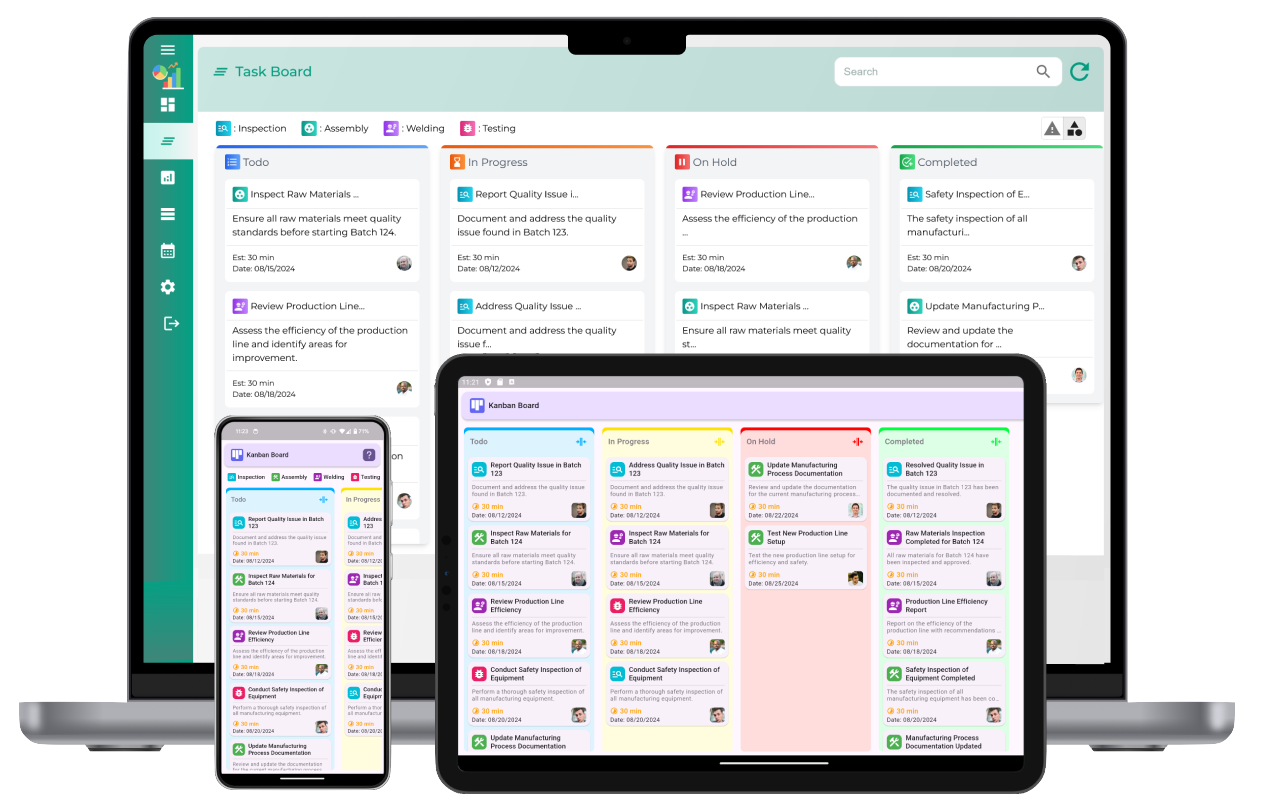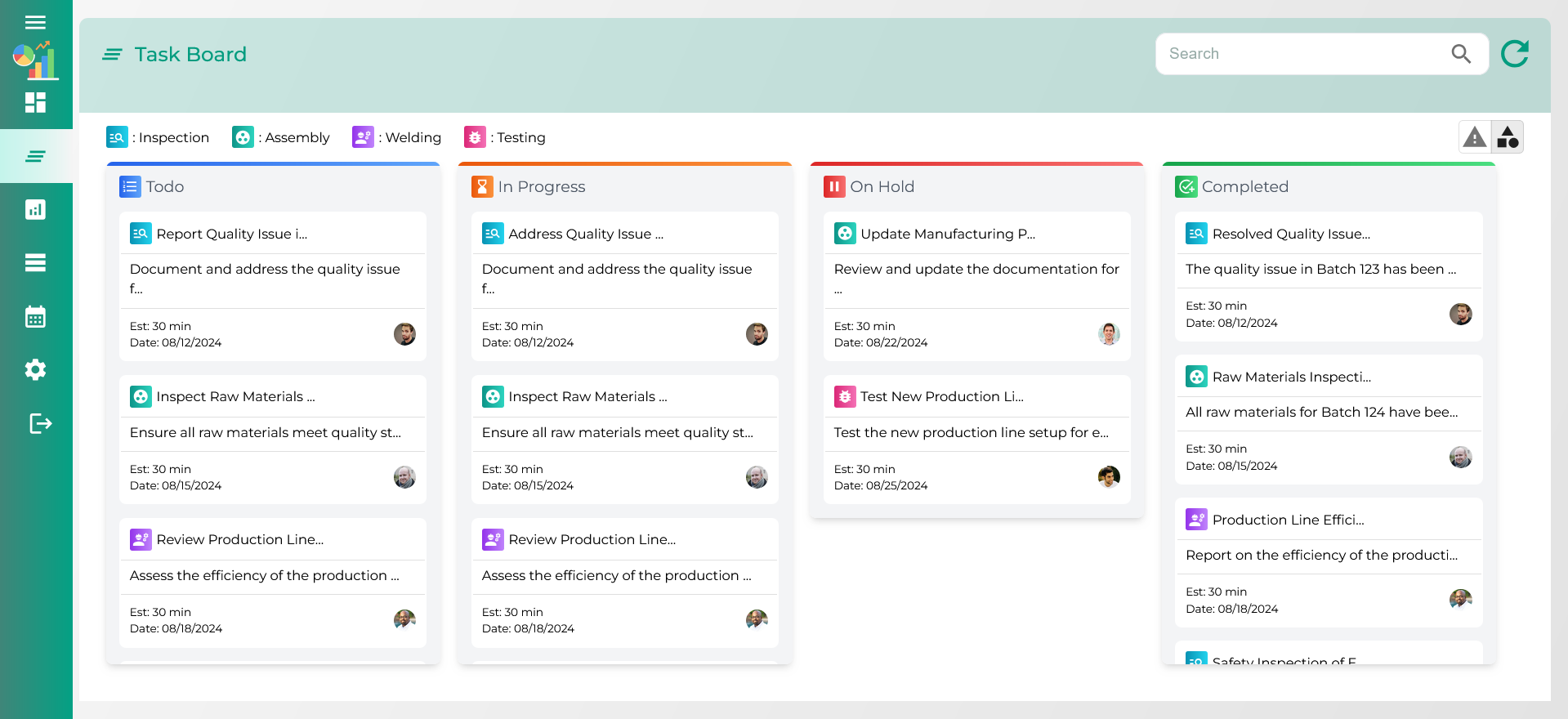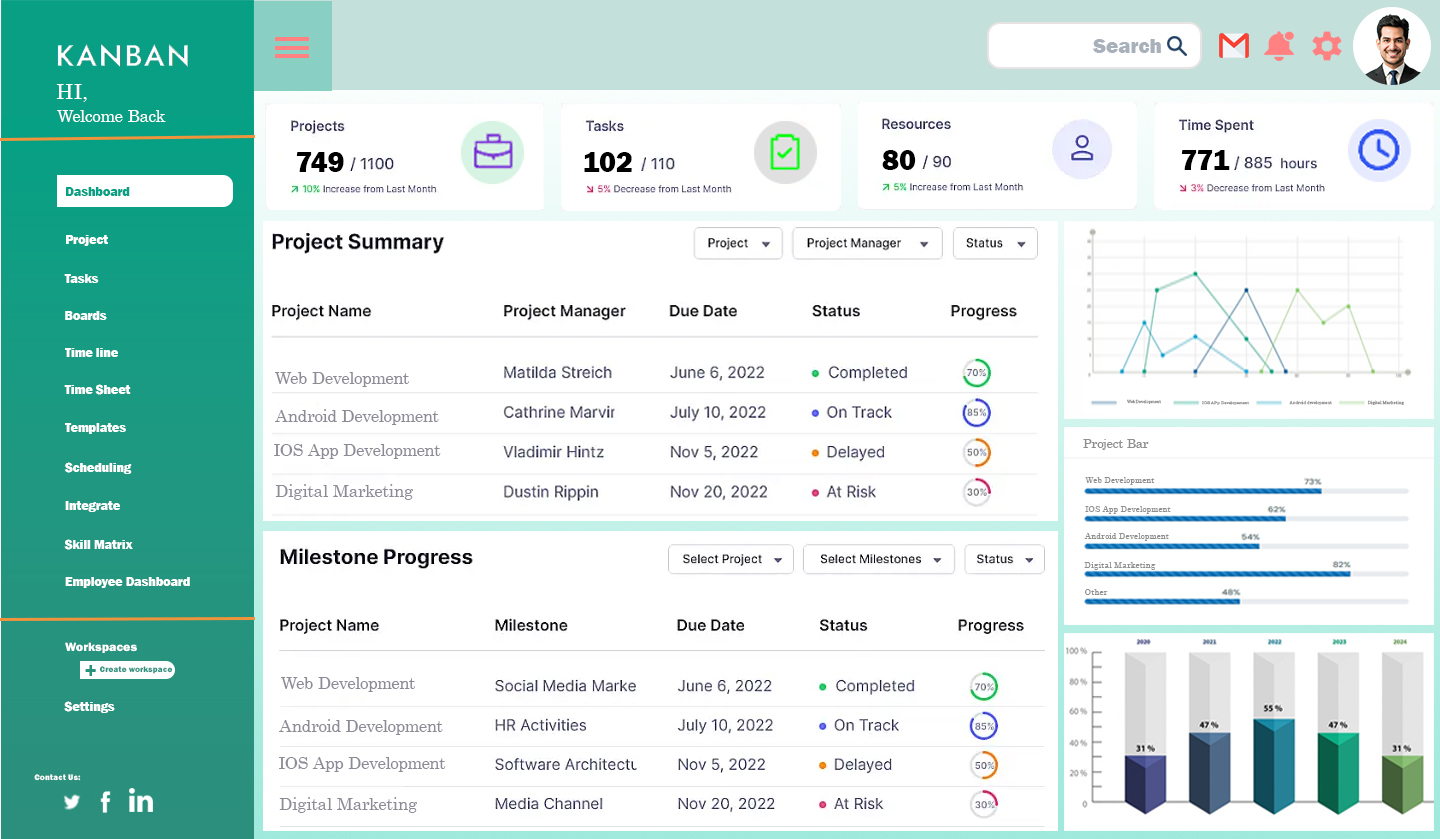In the realm of project management and workflow organization, TCard software and Kanban boards stand out as two highly effective tools. Both systems excel in visual management, making task and process tracking more intuitive, transparent, and efficient. While they share similarities in purpose, they differ in structure, features, and the types of industries they serve.
TCard Software Features
TCard software is a digital adaptation of the traditional T-card system used for managing tasks. The software modernizes task tracking, providing enhanced flexibility and eliminating the need for physical boards. Here are the key features:

1. Digital Task Cards
TCard software offers digital task cards, allowing users to input, track, and update tasks within a digital interface. These cards include essential task details such as description, deadlines, priorities, assignees, and attached files.
2. Visual Workflow Management
The software provides a visual representation of workflows, showing tasks across different stages like “To-Do,” “In Progress,” and “Completed,” helping teams track progress and spot bottlenecks easily.
3. Customizable Workflows
TCard software allows users to create customized workflows, tailoring columns and stages to fit their project needs. It’s adaptable across industries, making it useful in environments from manufacturing to office projects.
4. Task Assignment and Collaboration
Tasks can be assigned to specific individuals or teams, enhancing accountability. Multiple team members can collaborate on tasks, updating statuses in real-time to ensure transparency and smooth workflow.
5. Notifications and Alerts
To ensure timely task completion, the software provides notifications when tasks are assigned, deadlines approach, or tasks move between stages, helping prevent delays and keep projects on track.
6. Reporting and Analytics
TCard software offers reporting tools, providing insights into task completion times, bottlenecks, and project progress. These reports help improve workflow efficiency and guide decision-making for better performance.
7. Integration with Other Tools
The software often integrates with other tools, such as communication platforms and task management systems. This helps consolidate data and enhance productivity by syncing tasks and communications in one place.
8. Remote Access and Cloud-Based Functionality
TCard software is typically cloud-based, enabling remote access from anywhere. This feature is particularly useful for distributed teams, as it allows real-time collaboration and project updates.
Kanban Board Features
Kanban boards are visual tools originally designed for manufacturing but now widely used across various industries. They help teams manage tasks and improve workflow efficiency by visualizing work stages.

1. Visual Task Representation
Kanban boards use visual cards to represent tasks. These cards are placed into columns, representing stages like “Backlog,” “In Progress,” and “Done.” This visual structure helps teams monitor progress and prioritize tasks.
2. Workflow Customization
Kanban boards allow customization of workflows, enabling teams to create columns that match their specific processes. Whether for software development or marketing, the board can adapt to various project stages.
3. Work-In-Progress (WIP) Limits
A standout feature of Kanban boards is the ability to set WIP limits, which prevent overloading teams with too many tasks at once. Limiting the number of tasks in progress ensures focus and prevents bottlenecks.
4. Continuous Delivery and Improvement
Kanban boards emphasize continuous delivery, allowing teams to move tasks through the workflow as they’re completed. This system helps teams deliver work faster and adapt quickly to changes, encouraging ongoing improvement.
5. Task Prioritization
Kanban boards allow for task prioritization, ensuring that critical tasks are completed first. By moving high-priority tasks to the front, teams can focus on what matters most, keeping projects on schedule.
6. Collaboration and Communication
Teams can collaborate easily with Kanban boards, as they provide a clear view of what each member is working on. Digital Kanban tools offer additional features like task comments, file sharing, and real-time updates to enhance communication.
7. Metrics and Reporting
Kanban boards track key metrics such as cycle time and lead time, helping teams measure efficiency. Reporting tools provide insights into performance, allowing teams to optimize workflows and improve productivity.
8. Adaptability Across Industries
Kanban boards are highly adaptable, making them useful across industries like software development, marketing, HR, and healthcare. Their simplicity and versatility make them ideal for managing any process that requires task tracking.
Features of TCard Software and Kanban Board
What is TCard software?
TCard software is a digital task management tool that utilizes virtual T-cards to help teams organize, track, and update their tasks efficiently through a user-friendly interface.

How does TCard software improve task management?
It enhances task management by providing a visual representation of workflows, enabling teams to easily move tasks through different stages and improving accountability.
Can TCard software be customized for different workflows?
Yes, TCard software offers extensive customization options, allowing users to create workflows tailored to their specific project needs and industry requirements.
What are Kanban boards?
Kanban boards are visual management tools that display tasks as cards placed in columns, representing different stages of work, facilitating easy tracking and organization.
How do Kanban boards help with project efficiency?
They improve project efficiency by visualizing the workflow, helping teams identify bottlenecks, prioritize tasks, and ensure smooth progress toward completion.
Can tasks be assigned to team members in TCard software?
Yes, TCard software allows users to assign tasks to specific team members, fostering accountability and clarity regarding who is responsible for each task.
What is the benefit of setting work-in-progress (WIP) limits in Kanban boards?
Setting WIP limits prevents team overload, ensuring focus on completing current tasks before taking on new ones, which ultimately enhances productivity and efficiency.
Does TCard software provide notifications for task updates?
Yes, TCard software includes notification features that alert users when tasks are assigned, approaching deadlines, or updated, helping keep everyone informed.
Can Kanban boards be used in any industry?
Yes, Kanban boards are versatile tools that can be adapted for use in various industries, including software development, marketing, healthcare, and manufacturing.
How does collaboration work in TCard software?
TCard software facilitates collaboration by allowing multiple users to work on tasks simultaneously, updating statuses in real time and enhancing team communication.
What reporting features are available in TCard software?
TCard software often includes reporting tools that provide insights into task completion rates, project performance, and potential bottlenecks, aiding in informed decision-making.
Are Kanban boards effective for agile project management?
Yes, Kanban boards are essential for agile project management, promoting flexibility, continuous delivery, and ongoing improvement throughout the project lifecycle.
Can I integrate TCard software with other tools?
Many TCard software options offer integration capabilities with other project management, communication, and collaboration tools, streamlining workflows across platforms.
What are the advantages of using visual management tools?
Visual management tools, like TCard software and Kanban boards, enhance transparency, improve task tracking, foster collaboration, and simplify workflow management.
How do I choose between TCard software and Kanban boards?
Choose TCard software if you need detailed task tracking and customization. Opt for Kanban boards if you prioritize visual workflow management and continuous improvement.